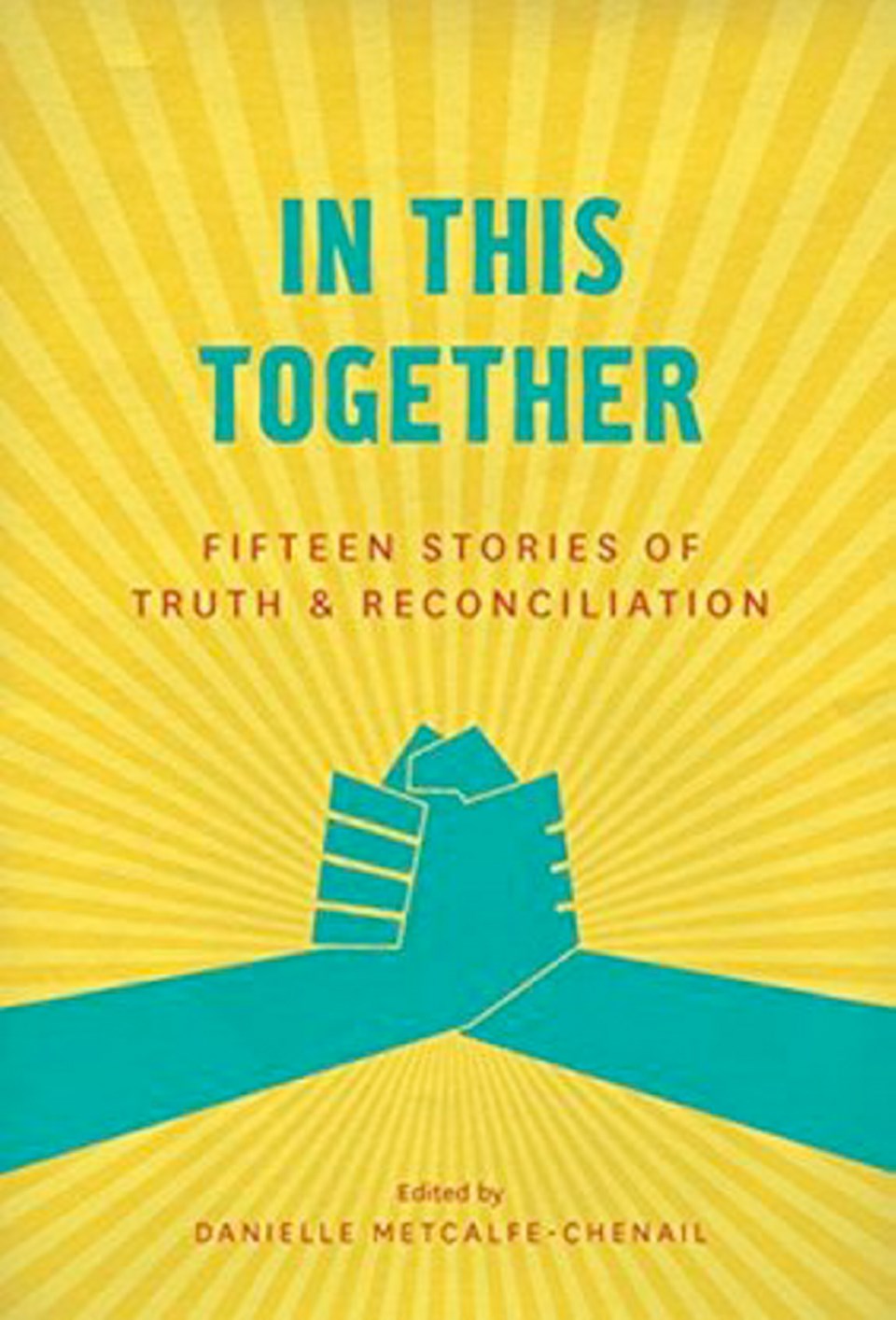In This Together: Fifteen Stories of Truth and Reconciliation
Edited by Danielle Metcalfe-Chenail
Brindle and Glass, 224 pp., $19.95
At the time, it seemed like a good idea. Take the children from Indian reserves, feed them a steady diet of Christianity, starve them of their own language and culture, and in the end, the theory went, they would assimilate nicely into the white society.
Of course, despite the best of intentions, residential schools did not work out as planned. Most of the children suffered for the rest of their lives; many were physically and sexually abused; many lives were ended prematurely because of these schools.
Today, the forced removal of children is seen as one of the strongest examples of Canada’s destructive, dismissive treatment of indigenous people during the past couple of centuries.
Those wrongs can never be made right, but we are seeing changes in attitudes, and in our understanding of history and ourselves. The release of the Truth and Reconciliation Commission’s recommendations has inspired much of that change.
In This Together, a collection of stories edited by Danielle Metcalfe-Chenail, reflects the new way of thinking, and the new concept of being Canadian. The stories in this book deal with harsh realities, and give a better understanding of the meaning of race, and the problems caused by racial divides.
On Vancouver Island, much of the attention goes to residential schools, and if we are looking for a better understanding of why these schools seemed like a good idea, it makes sense to check back issues of the Daily Colonist.
A century ago, for example, this newspaper reported that at the opening of the new Catholic-run school building on Kuper Island, the Bishop of Victoria said he was dedicating “this noble building to the service of God and the welfare of the native races of the island.”
He said that a debt was owed to the Indian people, and the government was repaying the debt by making them wards of the nation. These wards would get every advantage possible, the bishop said.
“The effect of the work would be to make the pupils true Christians and good and useful citizens,” the Colonist recorded him as saying.
William Ernest Ditchburn, the Indian commissioner, told the crowd that the federal government was doing all that it could to help the Indian “take his place in the commercial and industrial world along with his white brother.”
W.R. Robertson, the Indian agent for the Cowichan district, addressed the students using Chinook jargon. He told them that they should be grateful to the government and to the church for the efforts being made on their behalf, and that they should show their gratitude “by living up to the teaching obtained in the school and demonstrate that the money spent on behalf of Indians is not thrown away.”
Robertson added that the Indians should be loyal to the government and loyal to the church.
With attitudes like that, and with the advantage of hindsight, it is no surprise that the Kuper Island school became known as one of the worst residential schools in the province. The island’s name has been changed to Penelakut, but the horrific memories remain, and the damage cannot be repaired.
In 1932 the Colonist reported that B.C. had 17 residential schools and 46 day schools, including one on West Saanich Road. Together, these schools had about 3,600 students.
The next summer, during a teachers’ conference in Victoria, Capt. Gerald H. Barry, the Dominion Inspector of Indian Schools, said the goal of the schools was to ensure that “the Indian gets an education that will fit him to be a good citizen when he secures the franchise.”
Barry was referring to the right to vote — a right not granted until 28 years later.
A change in attitudes was evident by 1944, when the Provincial Museum featured an exhibition of indigenous arts and crafts from schools throughout British Columbia.
Clifford Carl, the museum’s director, said it was important to encourage arts and crafts, and bring them to the attention of the public.
“The old ceremonies have gone, and some of the old crafts have gone, but the ability is still there, and only needs stimulus,” he said.
The exhibition featured the work of artist George Clutesi, a 39-year-old who had gone through the residential school system many years before.
Clutesi’s paintings Twa-ya-tseek, the Wolf and The Thunderbird and the Sea Serpent were considered two of the most powerful in the show.
Clutesi went on to become a highly respected authority on indigenous culture. He was a member of the Order of Canada and was awarded an honorary degree by the University of Victoria. He died in Victoria in 1988.
Some of the essays in In This Together deal with or mention residential schools; all of them push us to continue the conversation that is only now starting to get to the heart of the matter at hand.
Metcalfe-Chenail’s book contains stories from throughout Canada, and from many different points of view. These stories, as a whole, will do much to promote a better understanding.
And that is a good thing.
The reviewer is editor-in-chief of the Times Colonist.



